Why is it important to know your fibre? Well, different fibres provide different qualities. Meaning different projects are suited better to particular fibres. Hemp is a plant based fibre, making it a wonderful option for vegans. It is incredibly strong and durable meaning it’s a great option for crochet projects that need structure such as bags and hats. And it is breathable which makes it perfect for knitted summer tops and cardigans.
What Is Hemp Yarn?
Hemp fibre comes from the stalks of the Cannabis Sativa plant. In this way it is similar to linen, (read our ‘Know Your Fibre: Linen’ blog here) jute, flax and bamboo. The stalks of the plant must be processed to extract the fibre. This is done by retting and decortication. Once the fibres are spun and wound together, it can then be used to produce yarns and fabrics.
- What is retting? Retting is the process that must be done to separate the fibre from the central stem. This involves laying the hemp stalks on the ground to expose them to moisture from rain or dew (hence dew-retting). The combination of the moisture that the stalks soak up and the drying effect of the wind, separates the fibre from the core stem.
- What is decortication? Decortication means the bast fibres and hurd fibres are separated. Bast fibres are long, strong, durable. Hurd fibres are short but strong, flexible, and low-density.
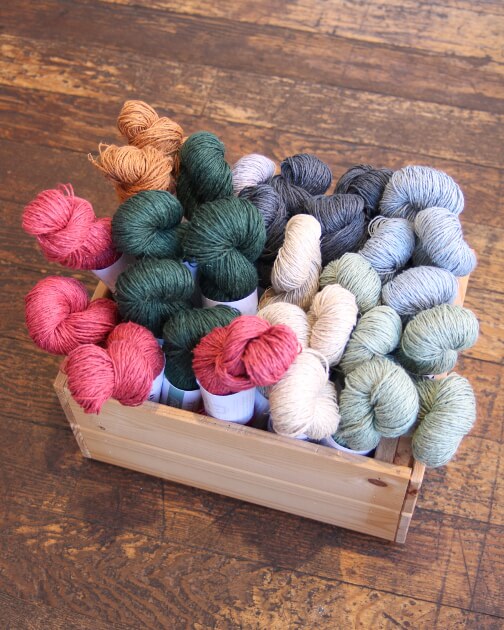

A Short History
We can trace the use of the hemp plant throughout history. It has been used for fabric, yarn, paper and medicine. Through finding imprints of rope on pottery, we can date the use of hemp fibre as far back as 10,000 BC to ancient civilisations in China.
The use of hemp fibre spread to the Mediterranean countries in the Christian era. Through trading it then spread through the rest of Europe during the Middle Ages. In the 16th century, it reached Chile, and later travelled to North America where American farmer’s were required by law to grow it in the 18th century.
In fact hemp is routed deeply in American history – it was used to make the very first American flag. As well as Uncle Sam who, during WW|| encouraged farmers to grow hemp through producing a film called ‘Hemp For Victory’ a propaganda film.
After the industrial revolution in the 18th century, the manufacturing of hemp fibre slowed down and was overtaken by other fibres such as cotton (read our ‘Know Your Fibre: Cotton‘ blog here) which was preferred due to the manufacturing costs being cheaper.
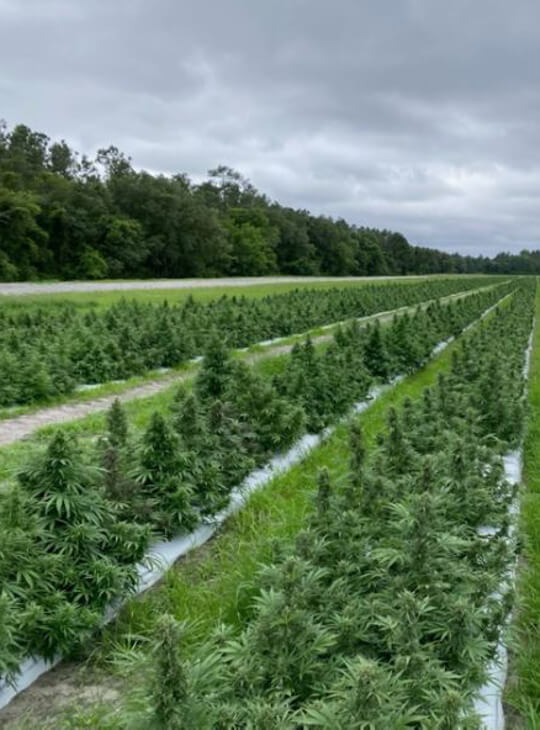

A Sustainable Option
Hemp is generally considered to be a fibre with little harmful impact on the environment. “Organic hemp is one of the most sustainable fibers you can use according to multiple sources, including the Textile Exchange and The Made-By Environmental Benchmark for Fibers (which gives non-organic hemp a “C” rating, while organic hemp gets an “A” – the best possible rating).” (https://cfda.com/resources/materials/detail/hemp)
Other benefits of hemp plant include: it’s a quick growing plant which means it can be harvested up to 3 times a year. The speed and density at which it grows also means it doesn’t need to be sprayed with chemical herbicides, as it chokes out competing plants. Hemp also returns around 65% of the nutrients it takes from the soil.
What Is Hemp Yarn Like To Knit & Crochet With?
Hemp is similar to linen in this sense. Though it can feel somewhat rough to begin with, hemp is a beautiful fibre that only softens with each use and wash.
With our Pernelle by Natissea yarn, you can even untwist the skein, soak it in water and then wring it out and leave it to dry before using it. This will soften it significantly if you don’t like the feel of it initially.
Another option is to wind the skein by hand rather than using a ball winder. The oils from your hand will begin to break down the fibre and soften the yarn this way.
Hemp, like other plant based fibres, has no stretch unlike wool and animal fibres. This makes it a really great fibre to crochet bags with, as they won’t stretch as much over time. If you’re used to knitting with wool and/or are a tight knitter naturally, this can feel a little strange at first, but something you’ll get used to quickly!
What To Knit & Crochet With Hemp Yarn
This is when it’s handy to know your fibre! Hemp yarn is fantastic for breezy summer tops and crochet accessories. Here are a few pattern recommendations.
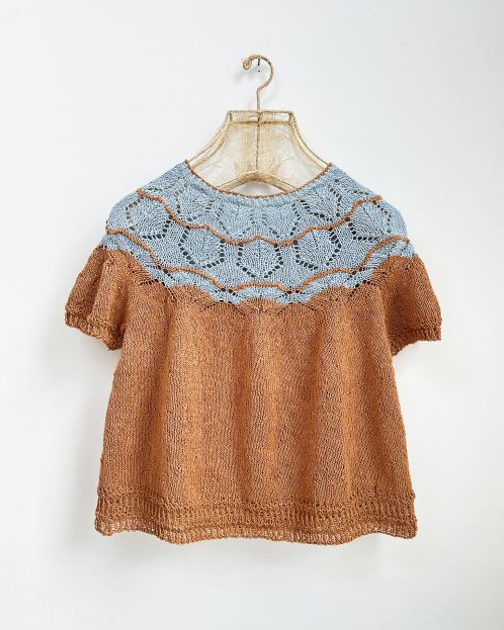
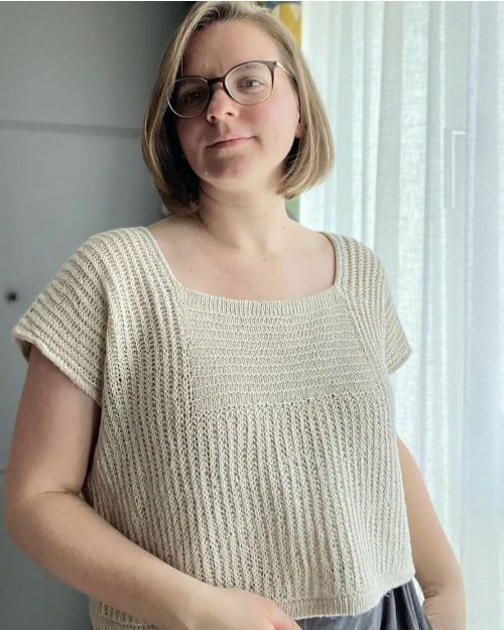
First up is the Ninfea top by Knitting For Breakfast (left). This top was designed to be used with Pernelle, This design really utilises the drape from the hemp yarn and hangs beautifully on the body. It is embellished with a delicate and elegant lace stitch on the yoke.
Next is the Verona Tee Shirt by by Pauline Fanguin (right). The Verona Tee-shirt is a flowing summer top with a really interesting drop shoulder construction. This simple silhouette would go well with any summer outfit.
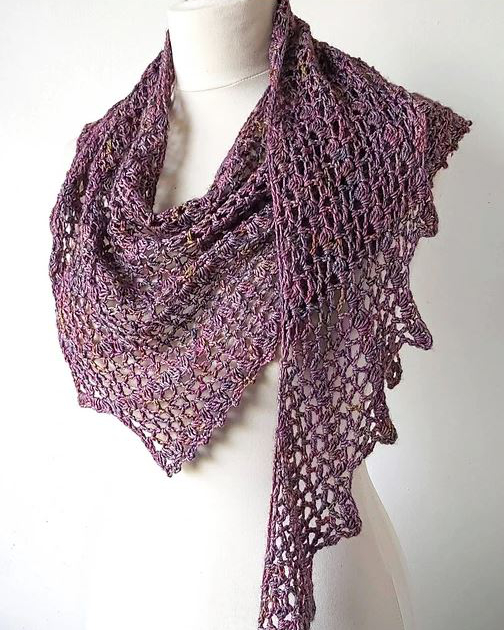

Now for the crochet patterns! On the left is the Tendril Shawl by Carmen Heffernan. A lacy shawl is a summer evening must-have. And made in a hemp yarn would be the perfect cover up, not providing too much warmth. Also a great option for those fair-haired people who burn easily in the sun, this would provide protection from the sun whilst still keeping you cool from the breathability of the fibre. The lacy stitch used in this design would also mean this shawl would work up fairly quickly.
On the right we have the Bladnet bag by Sidsel Sangild. Hemp is a good option for crochet bags as it’ll keep it’s shape well. The Bladnet Bag is a really fun take on the classic market bag, with a beautiful lacy leaf pattern.
Caring For Your Hemp Fibre Knits
Pernelle, like a lot of other hemp and plant based fibres can be machine washed (we always recommend a gentle wool cycle). Unlike woollen yarns which are typically used for warmer items such as jumpers, cardigans and hats, hemp is a summer appropriate fibre due to it’s breathability.
Although it has breathable properties, the nature of summer knits is that they’re going to be worn when you’re hot and sweaty! So will most likely need to be washed more often than their woollen counterparts, especially as they tend to be worn close to the skin rather than over a t-shirt for example. This is why it’s so handy that it can be machine washed. Plus the more it is washed the softer and more relaxed the fibres will become.
When cared for appropriately, hemp fibre has the ability to last a really long time due to it’s strength and durability.
Resources Used For This Blog Post
A Brief History of Hemp – Hemp Eyewear Edinburgh
Hemp – CFDA
Material Guide: How Sustainable Is Hemp Fabric? – Good On You
What is Hemp Yarn – Hemptique
What is the history and origin of hemp fiber? – Yarns and Fibers



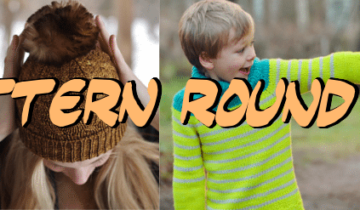
 No products in the basket.
No products in the basket.